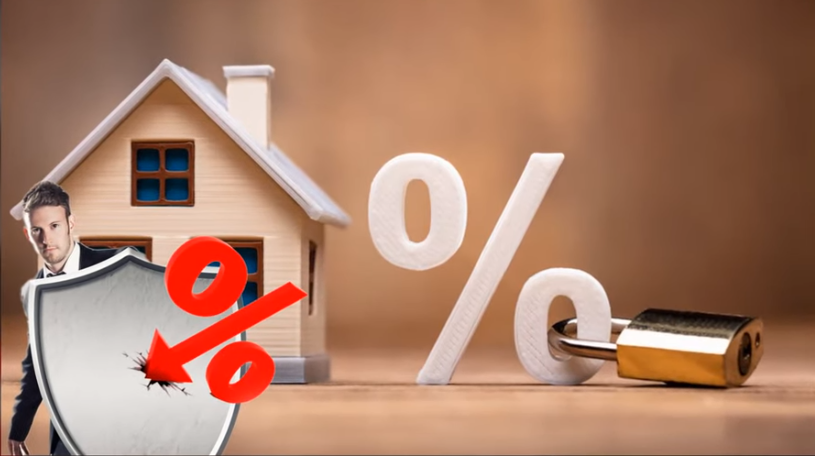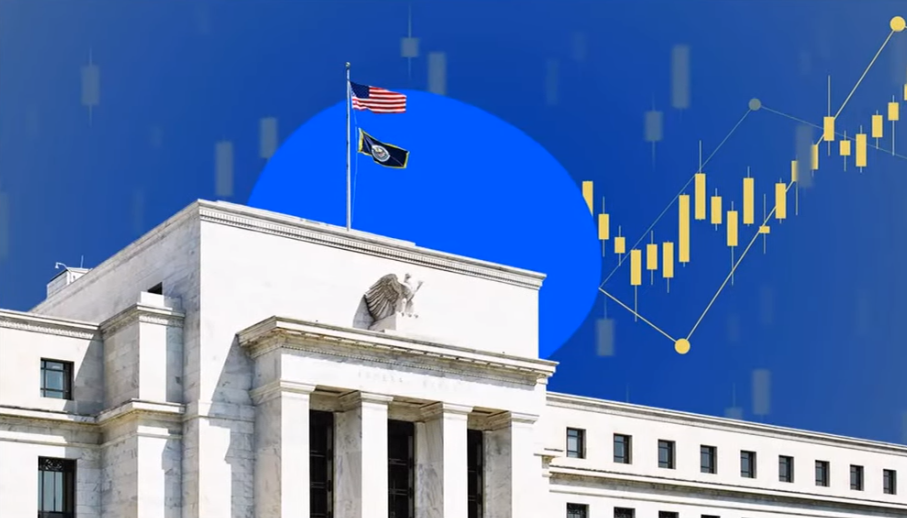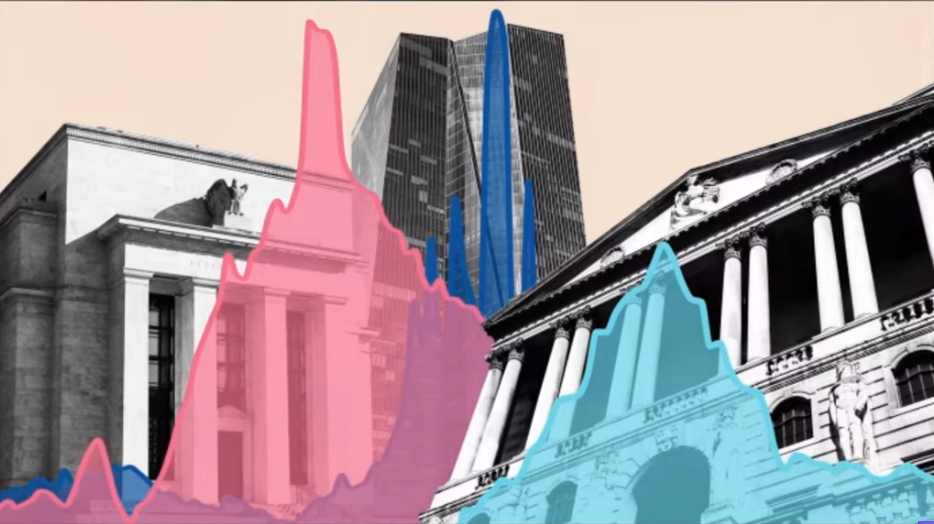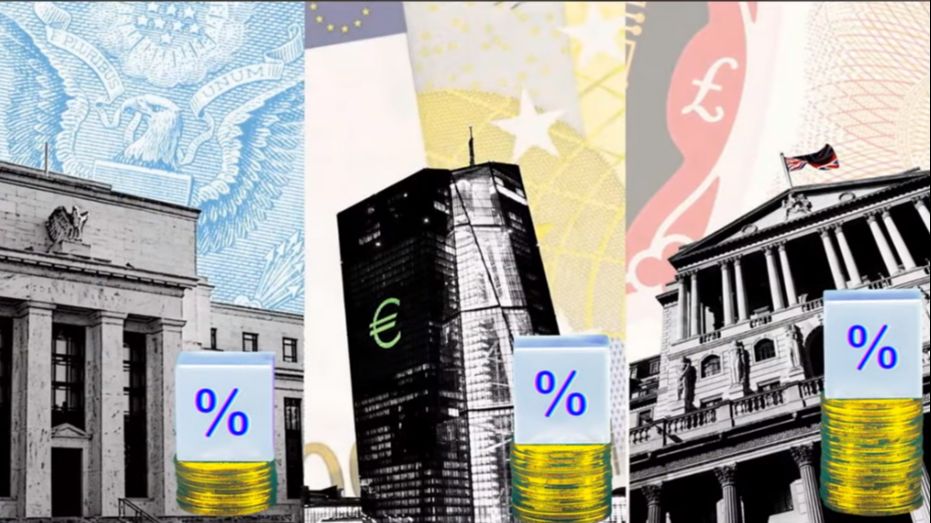The most direct reason is that rising interest rates will make borrowing more expensive. This can create a domino effect throughout the economy. Consumers will be more hesitant to take on debt, leading to reduced spending and investment. Businesses will also find it more difficult to access capital, causing their operations to contract. As a result, consumer confidence declines, job numbers decrease, wages stagnate, and stock prices plummet.
More dangerously, if central banks raise interest rates too quickly and too aggressively, the economy could fall into recession. So why do central banks still decide to raise interest rates? To understand better, in this video, let's explore the basic concepts.
Borrowing and Lending

Interest rates are the fees that borrowers must pay to lenders for using a sum of money over a certain period. For borrowers, the lower the interest rate, the better, as they will pay less money; conversely, high interest rates are what savers desire because they will receive a larger return on their deposits. However, there is no single common interest rate. In the economy of a country with hundreds or even thousands of commercial banks, each bank sets its own interest rates for loans. But all are influenced by the rates set by the central bank. The central bank can be seen as the bank of banks, just as you can deposit savings in a bank to earn interest.
Commercial banks can also deposit their reserves at the central bank and earn interest. Commercial banks need to maintain a certain amount of cash known as reserves to ensure liquidity for customers. When the amount of cash exceeds the required reserves, banks can lend to each other at interest rates or deposit with the central bank to earn interest. Although ordinary people do not directly borrow or deposit at the interest rates applicable to the excess reserves of commercial banks at the central bank, they are still affected by fluctuations in these interest rates, which is the goal that central banks aim for. By adjusting interest rates, they try to control inflation, the rate of price increases for goods and services to ensure economic stability.
For example, if the price of a certain item was $129 last month and increased to $139 this month, inflation has occurred. Central banks like the U.S. Federal Reserve, the Bank of England, or the European Central Bank often set a target to control inflation at around 2%. Interest rates are an extremely powerful tool to achieve this. When inflation rises, central banks will increase interest rates. This change spreads throughout the financial system and impacts the economy in many ways, thereby curbing the rate of price increases for goods.
Specifically, when the central bank raises interest rates, commercial banks will earn more profit from depositing reserves at the central bank. This makes lending less attractive for these banks, so they will raise lending rates to compensate for the lost profit. The impact of rising lending rates on consumers will vary depending on the characteristics of each economy. In some countries like Finland or Australia, many people take out mortgages with variable interest rates, which are often linked to the central bank's interest rates.
Therefore, when the central bank's interest rates rise, mortgage rates also increase, causing borrowers to pay more interest. This means they will have less cash to spend on other needs, resulting in a decrease in overall consumer demand, which helps reduce inflation. In other countries like the U.S. or Canada, most mortgage loans have fixed interest rates throughout the loan term. Therefore, those who have taken out fixed-rate mortgages will not be directly affected by rising interest rates. However, they will still feel the indirect impact; higher interest rates make new mortgage loans more expensive, reducing the demand for home purchases.

This can lead to a decline in home prices, causing homeowners to feel that their assets are depreciating, and thus they tend to tighten their spending. Thus, whether directly or indirectly, rising interest rates can lead consumers to reduce spending. This, in turn, contributes to curbing inflation, as rising interest rates also increase the borrowing and investment costs for businesses. This often leads to a slowdown in economic activity, reflected in fewer new investment projects being launched, fewer jobs being created, and slower economic growth.
For workers, a difficult economic environment may force them to accept lower wages or struggle to find jobs. This, combined with concerns about the future, will lead consumers to tighten their spending, continuing to exert pressure on the economy, thereby reducing inflation. Additionally, inflation causes the prices of goods and services to rise, reducing people's purchasing power. In other words, their money will buy fewer goods and services than before.
Overall, raising interest rates has the effect of slowing economic growth, thereby curbing inflation. When the economy slows down, consumer demand decreases, and businesses will also hesitate to raise selling prices. This contributes to controlling inflation. However, adjusting interest rates is not simple; the challenge lies in determining the appropriate level of interest rate increases to effectively control inflation without causing negative repercussions for the economy.
A Double-Edged Sword
History has witnessed cases of excessively aggressive interest rate hikes, leading to unpredictable consequences. A typical example is in 1981 when the U.S. Federal Reserve raised interest rates to a record 19% to control inflation. Although this policy succeeded in curbing inflation, it also simultaneously caused a severe economic recession. The reality shows that controlling inflation without negatively impacting economic activity is an extremely difficult problem; even in the U.S., one of the strongest economies in the world, it has been over 70 years since they last succeeded in reducing inflation from above 5% without causing a recession.

While a certain level of inflation is necessary to maintain economic growth, prolonged high inflation can cause many problems, with rising prices forcing workers to demand higher wages to offset living costs, leading to increased production costs for businesses. This can create a vicious cycle of ever-increasing prices, exacerbating inflation. India is a typical example of the challenges that high inflation can cause; the retail inflation rate in this country rose to 7.44% in 2023, combined with declining economic activity, creating a bleak outlook for India's economic prospects in the future.
In this context, central banks worldwide are facing the difficult task of adjusting interest rates; they must find ways to effectively control inflation while maintaining stability and growth for the economy. One of the biggest challenges they face is managing inflation expectations. If central banks can demonstrate their credibility and commitment to controlling inflation, bringing it back to the target level of 2%, they will be able to avoid the need to continuously raise and lower interest rates abruptly, causing disruptions to the economy. Changes in interest rates do not create immediate effects on the economy. In fact, it can take up to two years for these changes to fully take effect.

Central banks are fully aware of this, so when deciding to adjust interest rates, they must predict the future development path of the economy. However, predicting the future is always a challenging problem; central banks struggle to determine whether inflation will self-correct and decrease. Even when making accurate decisions based on the best forecasts, they can still encounter risks and cause unintended consequences.
Although it is a simple and risky tool, raising interest rates remains the primary measure that central banks use to control inflation. They acknowledge that raising interest rates can cause negative short-term consequences, such as slowing economic growth, but central banks believe that the short-term pain is a price worth paying for long-term stability. Keeping inflation low and stable will create a solid foundation for sustainable economic development. When inflation is controlled, people and businesses will no longer worry about the devaluation of money, allowing them to invest and spend with confidence, contributing to economic growth.
